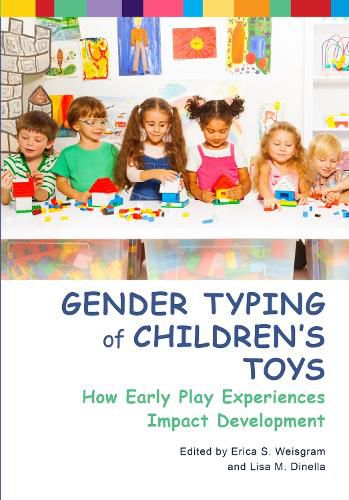Readings Newsletter
Become a Readings Member to make your shopping experience even easier.
Sign in or sign up for free!
You’re not far away from qualifying for FREE standard shipping within Australia
You’ve qualified for FREE standard shipping within Australia
The cart is loading…






What is the difference between
boy toys
and
girl toys?
What social, cognitive, and biological factors influence the design and marketing of gender-typed toys, and children’s interest in such toys?
What are the long term implications of gendered toy play, for children’s development and later adult roles?
In this volume, scholars in developmental psychology, education, and neuroscience examine the fascinating intersection of gender and child play.
Contributors consider the innumerable ways in which toys today are gender-typed, alongside the expression of gender preferences in early childhood. As research shows, children who play with different kinds of toys reap different cognitive, emotional, and social benefits.
Toys teach children various skills, including lessons about how they should or should not behave. Gender-typed play, therefore, both reflects and codifies gender stereotypes and constrains children’s later social roles.
With theoretically and empirically-based play interventions, as well as ongoing campaigns aimed at raising public awareness, this volume offers a clear blueprint for how researchers, clinicians, parents and activists can help reduce gender stereotypes and help children grow up to become the people they want to be.
$9.00 standard shipping within Australia
FREE standard shipping within Australia for orders over $100.00
Express & International shipping calculated at checkout
What is the difference between
boy toys
and
girl toys?
What social, cognitive, and biological factors influence the design and marketing of gender-typed toys, and children’s interest in such toys?
What are the long term implications of gendered toy play, for children’s development and later adult roles?
In this volume, scholars in developmental psychology, education, and neuroscience examine the fascinating intersection of gender and child play.
Contributors consider the innumerable ways in which toys today are gender-typed, alongside the expression of gender preferences in early childhood. As research shows, children who play with different kinds of toys reap different cognitive, emotional, and social benefits.
Toys teach children various skills, including lessons about how they should or should not behave. Gender-typed play, therefore, both reflects and codifies gender stereotypes and constrains children’s later social roles.
With theoretically and empirically-based play interventions, as well as ongoing campaigns aimed at raising public awareness, this volume offers a clear blueprint for how researchers, clinicians, parents and activists can help reduce gender stereotypes and help children grow up to become the people they want to be.